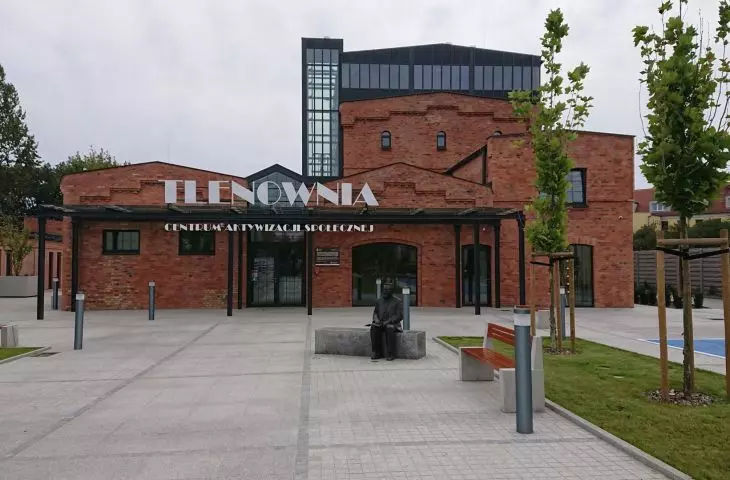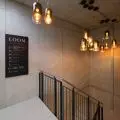They were supposed to be demolished, but they survived and serve a new purpose. The buildings of a former oxygen plant in Czempin, Wielkopolska, now serve as a local community center called the Oxygen Plant. On the scale of a small town, this is a significant and much-needed development.
Czempin - a town of five thousand people located about halfway between Poznań and Leszno. Since the 1990s, the brick buildings of the former oxygen factory and mechanical plant on Nowa Street, close to the railway station, directly next to the elementary school and opposite the Czempin municipal office, had been deteriorating here. The oxygen plant was established here a century ago, first privately owned, after the war - nationalized and closed at the end of the last century. The buildings had fallen into disrepair and were slated for demolition. The landmark preservationist gave permission for the demolition of the unregistered complex, but the local authorities decided to save the old buildings and, with the help of EU funding, to create the Social Activation Center "Oxygenownia" in them.
A complete metamorphosis
The task was entrusted to Poznań-based J.P. Woźny Design Studio. The finished Tlenownia was opened in late August. The buildings stand on a long, relatively narrow and deep plot behind a fence. The former solid brickwork has been given an openwork character and the entire complex is clearly visible from the street and the office. The mass and volume have been preserved and cleared of extensions. The only change visible from the outside is the addition of a glass elevator shaft and the superstructure of the top floor with a contemporary form clearly distinguishable from the old walls. On the eastern side, a walkway covered with a partially glass roof was also created between the main body of the Oxygen Plant and the low pavilions adjacent to the plot boundary. After reconstruction and adaptation, the building does not resemble the complete hovel it turned into after years of neglect.
View of the Oxygen Plant from the windows of the Municipality Office, from the side of Nowa Street.
Source: Czempin Municipality Office
Landscaping plays an important role here. A granite and syenite-lined walkway with benches along which 10 plane trees have been planted leads to the building standing deep in the plot. Trees are also growing in several large pots, a spacious pergola was also created at the back, and a greenhouse for crops was built next to the building. In front of the building stood a sculpture depicting Antoni Jezierski - an interwar entrepreneur and founder of the Oxygen Plant. The front facade bears the 1920s stylized inscription TLENOWNIA, distinctive and legible, though a bit too large. After all, there are no establishments next door among which the Oxygen Plant would have to stand out strongly.
Instead, care should be taken to ensure that the space around the social activation center is visually, aesthetically and functionally connected with the area around the school and the square (or parking lot) of the Municipality Office. In this way, an interesting public space stretching from the railroad station area on Kolejowa Street to the surroundings of the office on Popiełuszki Street could be created.
Tlenownia Social Activation Center in Czempin, passage between the main building and side pavilions.
Photo: Przemyslaw Wozny
without excess
- The authorities wanted to put a sports hall on the plot yet, but happily gave up this intention. As a result, there was plenty of space for arranging greenery and space for relaxation and integration," says chief designer Przemyslaw Wozny. At the same time, he appreciates the municipality's decision to save the form of the old buildings. - We managed to save more than thirty percent of the original substance: primarily the outer walls. The rest are new structures: reinforced concrete or steel. We also tried to preserve as much of the original details as possible, although this was not always successful.
Wozny adds that construction work on old structures is complicated and requires a great deal of commitment from contractors, which he believes in this case translated into a very good end result.
Tlenownia Social Activity Center in Czempin, left: entrance hall, right: one of the library rooms.
Photo: Przemyslaw Wozny
The first floor of the main building houses a multifunctional room intended for cultural and integration purposes, film screenings, but also city council meetings. The library occupies part of the ground and second floors. On the top floor is another meeting room. There are also spaces for rent for catering, among other things, so that as much as possible can happen in the building.
The oxygen plant is not a large facility, but the scale and quality of the project are still significant compared to the size of the town. In this way, Czempin is increasing its attractiveness not only to existing residents, but also to future ones. Other suburban municipalities act similarly, such as Rokietnica, located closer to Poznań, which with its new public buildings and plans to create a local center is competing with other centers fighting for economic "refugees" from the increasingly expensive provincial capital.










































